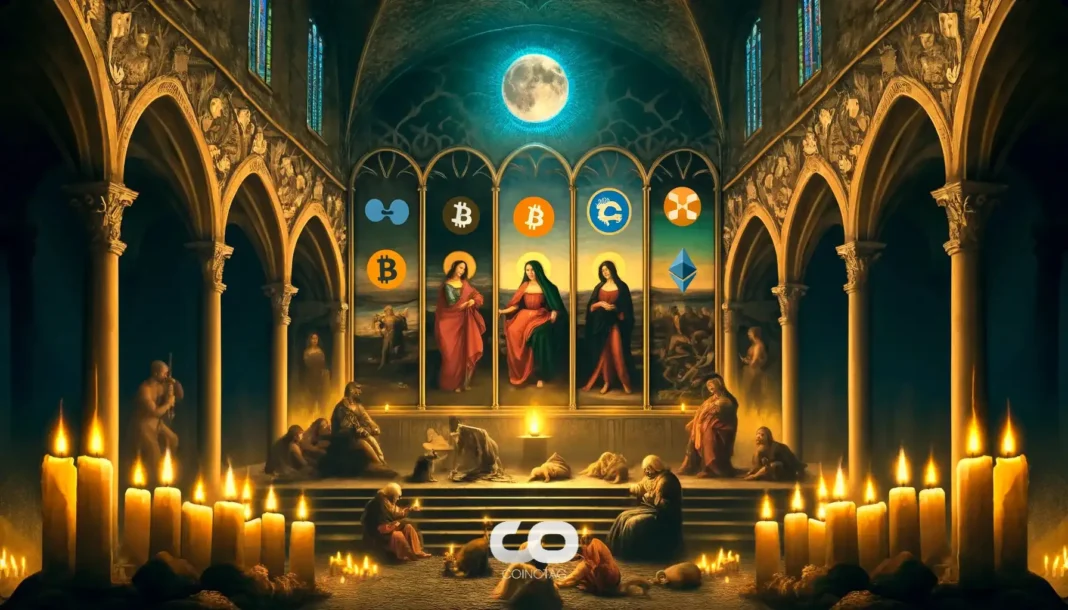-
Physical Bitcoins merge the digital value of cryptocurrency with tangible collectibles, offering a unique blend of security, history, and novelty in the crypto space.
-
From early innovations like Casascius coins to modern iterations, physical Bitcoins serve as cold storage devices and coveted collector items, reflecting both Bitcoin’s evolution and regulatory challenges.
-
According to COINOTAG, “Physical Bitcoins combine crypto security with real-world scarcity, making them both practical and collectible assets in today’s market.”
Explore the history, technical workings, and market value of physical Bitcoins, blending crypto utility with collector appeal in 2025.
Understanding Physical Bitcoins: A Tangible Link to Digital Currency
Physical Bitcoins are unique objects—typically metal coins or cards—that contain a hidden private key granting access to Bitcoin stored on the blockchain. Unlike mere souvenirs, these tokens hold real BTC value, secured beneath tamper-evident seals or embedded in hardware. The most iconic example, Casascius coins, introduced in 2011, featured a private key concealed under a hologram, allowing owners to verify balances publicly while keeping funds secure. These coins function not only as cold wallets but also as rare collectibles, especially since regulatory actions in 2013 limited their production. Today, physical Bitcoins symbolize a bridge between the intangible nature of cryptocurrency and the human desire for tangible assets.
The Appeal of Physical Bitcoins: Beyond Digital Ownership
Interest in physical Bitcoins stems from multiple motivations. Collectors prize them for their rarity and historical significance, often valuing limited editions above their Bitcoin content. Investors appreciate the security benefits, as these coins serve as offline cold storage, immune to online hacking risks. Additionally, gifting physical Bitcoins offers a memorable way to introduce others to cryptocurrency, combining novelty with real value. The tactile experience of holding Bitcoin in hand appeals to enthusiasts who seek a physical connection to the digital asset class, enhancing engagement and appreciation.
Tracing the Origins: The Evolution of Physical Bitcoins
The journey of physical Bitcoins began in 2011 with early projects like BitBills—plastic cards embedding private keys protected by holograms. These cards introduced the concept of Bitcoin as a bearer instrument, transferable by possession. Shortly after, Mike Caldwell’s Casascius coins gained prominence, minting thousands of metal coins loaded with BTC and sealed for security. Caldwell’s work popularized physical Bitcoins but ended in 2013 due to regulatory pressures from FinCEN, which classified the coins as money transmission products. Subsequent creators like Lealana, Alitin Mint, Titan Bitcoin, BTCC Mint, and Denarium expanded the market with varied designs and security features, though many projects ceased amid evolving legal and security challenges.
Technical Mechanics: How Physical Bitcoins Secure Digital Wealth
At their core, physical Bitcoins encapsulate a Bitcoin private key within a physical medium, ensuring the key remains concealed until redemption. The private key grants spending authority over the BTC loaded to the corresponding public address on the blockchain. Security measures include tamper-evident holograms, sealed compartments, or hardware encryption. For example, Casascius coins hide the key beneath a hologram that irreversibly shows tampering if peeled. Devices like Opendime store keys in hardware, accessible only by physically breaking the device. This design ensures that the first person to reveal the key effectively redeems the Bitcoin, rendering the physical token spent and preventing reuse.
Valuation Insights: What Determines a Physical Bitcoin’s Worth?
The value of a physical Bitcoin is a composite of its underlying Bitcoin content and its collectible attributes. The baseline is the BTC amount loaded on the coin, fluctuating with market prices. For instance, a 1 BTC coin’s intrinsic value aligns with Bitcoin’s current price, which could range widely. Beyond this, rarity, condition, provenance, and historical significance can add substantial premiums. Intact Casascius coins, especially early editions graded by professional services, often sell above their BTC value, reflecting collector demand. Conversely, novelty coins without BTC hold minimal monetary value, primarily driven by craftsmanship or limited edition status.
Marketplaces and Risks: Navigating Physical Bitcoin Transactions
Physical Bitcoins trade across various platforms, including online marketplaces like eBay, collector forums such as Bitcointalk, auction houses, and private sales. Buyers should exercise caution, verifying coin authenticity through public address balance checks and hologram integrity. Risks include theft, damage, counterfeit coins, and compromised private keys. Employing escrow services and purchasing from reputable sources mitigates these risks. Awareness of legal obligations and market dynamics is essential for safe and informed transactions.
Bridging Crypto Utility and Collector Enthusiasm
Physical Bitcoins represent a fascinating intersection of cryptocurrency’s digital innovation and tangible collectible culture. They offer secure cold storage options while embodying Bitcoin’s rich history and evolving narrative. For enthusiasts and collectors alike, these tokens provide a unique way to engage with Bitcoin beyond the screen. As the market matures, due diligence and informed decision-making remain paramount to harness the full potential of physical Bitcoins safely and effectively.
Conclusion
Physical Bitcoins stand as enduring artifacts of cryptocurrency’s early days, blending real BTC value with collectible appeal. Their rarity, security features, and historical context make them sought-after by collectors and investors. While regulatory and security challenges have shaped their evolution, physical Bitcoins continue to captivate those seeking a tangible connection to digital currency. Prospective buyers and sellers should prioritize authenticity verification and risk management to navigate this niche market successfully. Ultimately, physical Bitcoins enrich the crypto ecosystem by offering a unique, touchable dimension to Bitcoin ownership.





